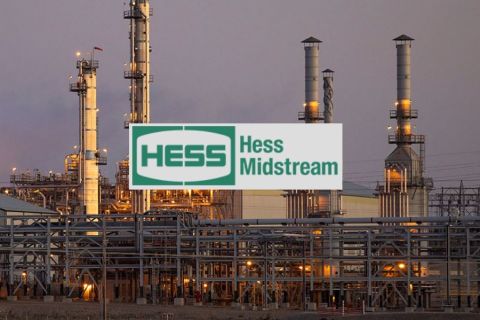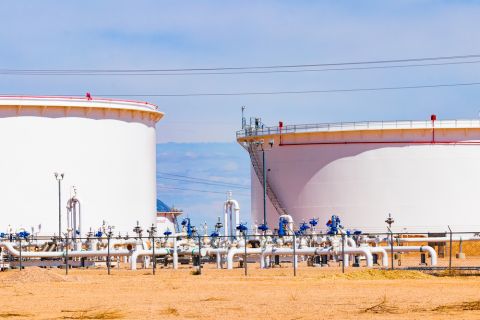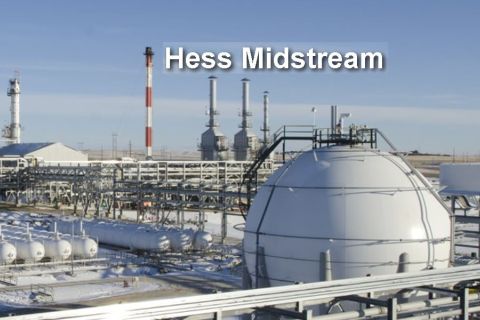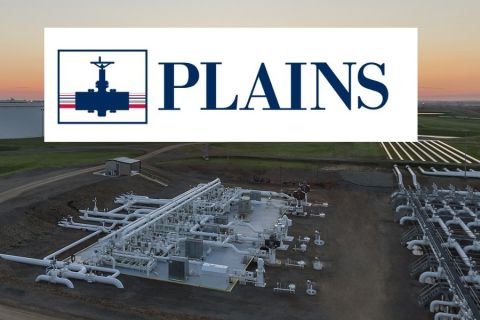The dominance of the subsea market held by heavyweights such as Saipem, Technip, and Subsea 7 is slowly being chipped away. This is not to say that these companies are not still the dominant force in the market, but where once they had almost total control, substantial contracts are now being awarded to some of the newer entrants to the market.
Companies such as Ocean Installer and EMAS AMC are showing that there is work to be won from international operators like Statoil and Shell, which have traditionally stuck with established contractors. There also is a trend of more companies trying to break into this market, and a recent spree of speculative newbuild orders placed for large subsea construction assets is starting to flow from these companies.

FIGURE 1. Ceona Offshore’s newbuild 200-m (656-ft) vessel Ceona Amazon, due for delivery in 2015, is a variation on a drillship design hull. It will have a 570-tonne tension-lay system installed as well as two 400-tonne cranes and will be capable of ultra-deepwater work. (Image courtesy of Ceona)
One problem that all these relative newcomers face is that more established companies can offer a complete service package – including diving services – which all of the other contractors like. There are a number of diving contractors who can work with these companies, but that is not always the most competitive option and can hinder them due to the combined margins.
Giants stay in; new Amazon enters game
Recent activity illustrates the efforts of some of the newer players in this area. Ceona Offshore (formerly Offshore Installation Group) has chartered the SX121 design vessel being built at the Ulstein Verft shipyard in Norway from GC Rieber for five years, with five years of options. The vessel is due for delivery in 1Q 2014 and is designed for the subsea umbilicals, risers, and flexibles market, with Ceona installing a 270-tonne vertical lay system.
Ceona has tried to break into the market before but has struggled with converted vessels that have not met the high standards required for the North Sea. The company’s current assets include the Blue Giant, currently performing accommodation work for Pemex offshore Mexico, and its second vessel OIG Giant 2, which also is working offshore Mexico. The company is planning an extensive upgrade of the OIG Giant 2 toward year-end 2013 with new dynamic positioning systems and a new lay system.
There were plans to add another conversion, the OIG Giant 3, but that was scrapped after the chosen yard went into administration. The company is now planning to build a 200-m (656-ft) variation of a drillship design at an undisclosed German shipyard. This vessel, the Ceona Amazon (Figure 1) will have a 570-tonne tension-lay system installed as well as two 400-tonne cranes. Delivery is expected to be around early 2015.
Ceona’s new, more modern fleet will place it in direct competition with the likes of Technip and Subsea 7, although Ceona currently lacks the depth of services that these top players can offer. However, its majority shareholder, Goldman Sachs, is looking to make the company profitable sooner rather than later.
Support, pipelaying vessels added to fleets
Other companies also are starting build their fleets, such as Reach Subsea, which in conjunction with Solstad Offshore has ordered an STX OSCV 03 design construction support vessel from STX OSV (since renamed Vard) at a cost of US $105 million.

FIGURE 2. DOF Subsea’s newbuild large construction vessel has only recently been ordered and will have a 900-tonne crane capable of carrying out substantial lifts in deep water, where subsea equipment is becoming larger and heavier. (Image courtesy of DOF Subsea)
Reach will charter the vessel, to be named the Normand Reach, from Solstad at a cost of $60,000/d for at least five years. Delivery is scheduled for 2Q 2014 with the vessel accommodating a 250-tonne AHC subsea construction crane and 100 berths. What the company does in the meantime has yet to be decided, although most work for this season has already been awarded, and the jobs left unawarded for 2014 are dwindling.
McDermott is another company that is looking to encroach on Subsea 7 and Technip’s market share in the North Sea after a long absence working in the Middle East and Asia.
The company has established a partnership with Ocean Installer for the installation of rigid pipe lay, while it is likely that its newest vessel in the North Ocean series, the Lay Vessel 108, will be targeted for work around the North Sea. To help it move into the North Sea sector, the company also has acquired the subsea engineering company DeepSea, based in the UK. The move is aimed at helping McDermott bolster its engineering capabilities.
One company that could throw a spanner in the works, particularly for Subsea 7 and Technip, is DOF and its subsidiary DOF Subsea. The company recently ordered two new vessels: one large construction vessel with a 250-tonne crane, and an extra-large construction vessel with a 900-tonne crane (Figure 2).
Neither of these vessels has solidified contracts, which has led to the suggestion that DOF will look to keep these vessels in-house to build up its own complete contracting business. DOF has one of the largest subsea fleets in the market, but most of its strategically important assets, such as dive support vessels and flexlay vessels, are on charter to major contractors such as Technip and Subsea 7.
If the company is intent on setting up its own integrated service offering, it will likely take those vessels back once their contracts have ended. Whether this will come to pass is uncertain since there will be some financial details to sort out, and all the vessels on charter to Subsea 7 and Technip have several years left on their firm contracts.
Bibby Offshore, meanwhile, has looked to go the other way when compared to companies such as Ceona and Reach, building up its diving services and then looking to add other subsea services.
Rather than pursue the top end of the market, it appears to be looking at the light construction market with its new company, Bibby Remote Intervention Ltd. (BRIL). BRIL already has chartered the Toisa Warrior (Figure 3) from Sealion and is looking to expand its light construction fleet further for several jobs over the next two or three years. The company also will continue to focus on its diving fleet, which it recently invested in through the purchase of the Bibby Polaris from Toisa.
Don’t miss the boat
Overall, the outlook for the subsea construction market up to 2015 remains positive, which is why these companies are making their move now before they miss the boat.

FIGURE 3. Bibby Offshore has targeted the light construction market via its new company, BRIL, which has chartered the Toisa Warrior to carry out such work and is looking to further expand its light construction fleet. (Image courtesy of Sealion Shipping)
There is some uncertainty beyond 2015. Once all these recently ordered vessels are delivered, there will be more clarity on whether they are absorbed into the market smoothly. It is likely that there will be some oversupply once the fringe companies and those without experience begin ordering vessels, which may not be up to the high standards required for the North Sea in particular.
One current area where there is a shortage in the market is the light construction market for vessels offering between 50-tonne and 150-tonne subsea cranes, deck space of at least 750 sq m (8,073 sq ft), and accommodation for at least 60 people. The market for this type of vessel has tightened up a great deal, and there is very little quality newbuilding activity in this area.
Recommended Reading
Hess Midstream Subsidiary to Buy Back $100MM of Class B Units
2024-03-13 - Hess Midstream subsidiary Hess Midstream Operations will repurchase approximately 2 million Class B units equal to 1.2% of the company.
Report: Crescent Midstream Exploring $1.3B Sale
2024-04-23 - Sources say another company is considering $1.3B acquisition for Crescent Midstream’s facilities and pipelines focused on Louisiana and the Gulf of Mexico.
Squashing Midstream: Lessons Learned as Sector Looks to Horizon
2024-04-08 - What does the next level look like for the midstream sector?
Hess Midstream Announces 10 Million Share Secondary Offering
2024-02-07 - Global Infrastructure Partners, a Hess Midstream affiliate, will act as the selling shareholder and Hess Midstream will not receive proceeds from the public offering of shares.
Plains All American Names Michelle Podavin Midstream Canada President
2024-03-05 - Michelle Podavin, who currently serves as senior vice president of NGL commercial assets for Plains Midstream Canada, will become president of the business unit in June.





